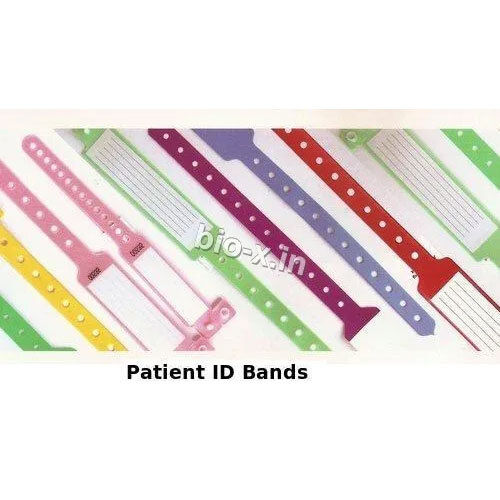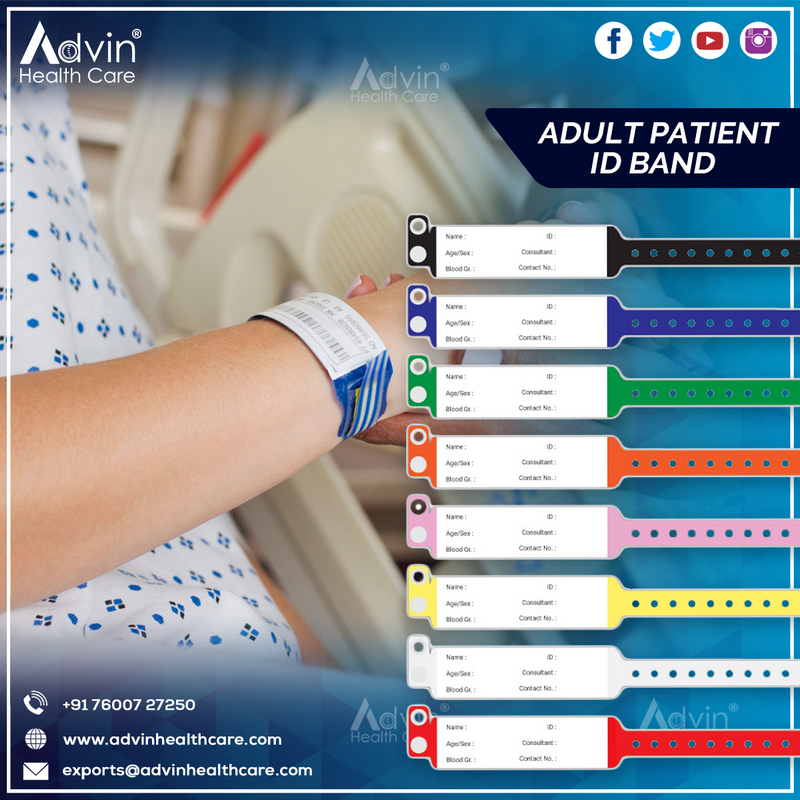Understanding the Innovative Improvements Behind the Patient Identification Band
Understanding the Innovative Improvements Behind the Patient Identification Band
Blog Article
Exploring the Numerous Sorts Of Patient Identification Band Used in Medical Facilities
In the intricate globe of health care, the important role of Patient Identification bands commonly goes unnoticed. These bands, varying from easy paper wristbands to innovative RFID bands, develop the backbone of Patient safety protocols, making certain precision in Patient Identification.
Comprehending the Relevance of Patient Identification Bands
While they might appear like plain accessories, Patient Identification bands play a crucial role in clinical facilities. These bands work as an important device for validating Patient identification, avoiding clinical errors connected to misidentification. The bands generally display crucial details such as the Patient's name, age, blood type, and any kind of recognized allergies. They permit medical care specialists to swiftly access this vital info, thus promoting precise and timely clinical treatment. Patient Identification bands likewise help in simplifying administrative jobs, ensuring accurate record-keeping and billing. Regardless of their simplicity, these bands personify the concept of Patient safety, a keystone of top quality healthcare. Without them, the threat of clinical errors, and subsequently, Patient injury, may significantly raise.
Traditional Paper Wristbands: Their Use and Limitations
Standard paper wristbands have been a staple in Patient Identification across numerous medical centers. While their usage is prevalent, they nurture specific constraints that might influence their performance in Patient monitoring. This section will concentrate on the scope of their application and the fundamental disadvantages related to their use.
Paper Wristbands: Usage Range
In the realm of Patient Identification, paper wristbands have long held an essential function. These bands are typically made use of in outpatient settings, where the Patient's stay is short-lived. Regardless of improvements in technology, the modest paper wristband continues to be a dependable and cost-effective option for Patient Identification in numerous medical care circumstances.
Limitations of Paper Wristbands
In spite of their widespread usage, paper wristbands are not without their downsides. In addition, paper wristbands usually do not have the technical capabilities of more modern-day alternatives, such as barcoding or RFID chips, restricting their performance to simply presenting composed information. Paper wristbands can create discomfort or skin inflammation to some clients, especially when put on for extended durations.
Barcoded Wristbands: Developments in Patient Identification
While Patient Identification has long been a crucial facet of health care, the advent of barcoded wristbands represents a considerable leap forward. These bands take advantage of the simplicity of barcoding technology, enabling Patient details to be rapidly checked and accessed. They boost the speed and precision of Patient Identification, reducing the threat of medical errors connected to misidentification. Barcoded wristbands are cost-efficient, simple to produce, and get rid of handwriting errors typical with hand-operated systems. They are not without constraints. While they supply improvements over standard bands, the barcode can end up being used or smudged, making it unreadable. Regardless of this, barcoded wristbands remain a necessary device in modern healthcare setups, symbolizing the crossway of innovation and Patient care.
Superhigh Frequency Identification (RFID) Bands: a Step Towards Futuristic Healthcare
The advancement of Patient Identification bands has actually caused the appearance of Superhigh frequency Identification (RFID) Bands (patient identification band). These innovative tools existing key benefits for medical care centers, using an extra efficient and technically advanced ways of Patient Identification. The implementation of RFID in healthcare is a substantial step towards an extra futuristic method to Patient monitoring and safety
Understanding RFID Bands

RFID Bands: Secret Advantages
Mainly, these Discover More bands enhance Patient safety by supplying precise, instantaneous Identification, therefore reducing medical mistakes. RFID bands can store a huge amount of Patient data, consisting of clinical history and allergies, making it possible for personalized care. On the whole, RFID bands stand for a substantial improvement in Patient Identification modern technology, profiting both patients and medical care suppliers.
Carrying Out RFID in Medical Care
As we enter a technically sophisticated period, the execution of RFID bands in healthcare comes to be increasingly vital. These bands supply a smooth means to track and determine individuals, ensuring their safety and security and improving performance in therapy procedures. RFID bands offer many benefits over conventional Identification techniques. They can keep a vast quantity of information, consisting of the Patient's case history and therapy plans, which can be easily accessed by doctor. This information helps physicians make informed decisions relating to the Patient's treatment plan. Furthermore, RFID bands reduce medical errors by giving precise Patient Identification, which is critical in stopping misdiagnosis or wrong medicine administration. Thus, the implementation of RFID bands is a substantial step towards enhancing Patient safety and security and healthcare delivery.

Color-Coded Wristbands: Assisting in Quick and Accurate Diagnosis
In the dynamic atmosphere of a clinical facility, color-coded wristbands have become essential tools for swift and specific Identification of a client's clinical condition. These wristbands, put on by individuals, bring details colors that match to different medical conditions or statuses. For example, red could suggest allergy threats, while yellow could indicate a loss threat. This system is designed to provide prompt visual cues to doctor, boosting Patient safety and care quality. In emergency situations, using these wristbands permits fast decision-making. However, the effectiveness of color-coded wristbands relies on the uniformity of color interpretation across health care institutions, calling for typical requirements for consistent application.
Strategies for Efficient Execution and Monitoring of Patient ID Bands
Achieving optimal use of Patient Identification bands requires a well-structured technique for their application and administration. Patient education and learning is also vital; patients need to recognize the objective of the bands and the demand for their continuous wear. It's essential to have a back-up strategy in area, such as barcode scanning or biometrics, to ensure that Patient Identification is never jeopardized.
Verdict
Patient Identification bands are vital in clinical facilities to make sure security and accuracy. Typical paper, barcoded, RFID, and color-coded wristbands each hold one-of-a-kind benefits, varying from cost-effectiveness to innovative data storage and immediate clinical informs. check out this site Efficient application and management of these bands can dramatically reduce clinical errors, boost efficiency, and enhance general Patient treatment. Hence, understanding and making use of these Identification tools is paramount for preserving high standards in medical hop over to these guys care.
These bands, varying from basic paper wristbands to advanced RFID bands, form the backbone of Patient security methods, making sure precision in Patient Identification.The development of Patient Identification bands has brought about the appearance of Radio Frequency Identification (RFID) Bands. In general, RFID bands represent a significant innovation in Patient Identification innovation, benefiting both individuals and medical care service providers.
RFID bands lower clinical mistakes by giving exact Patient Identification, which is crucial in stopping misdiagnosis or incorrect medication administration. Patient education is also essential; people have to understand the purpose of the bands and the need for their continuous wear.
Report this page